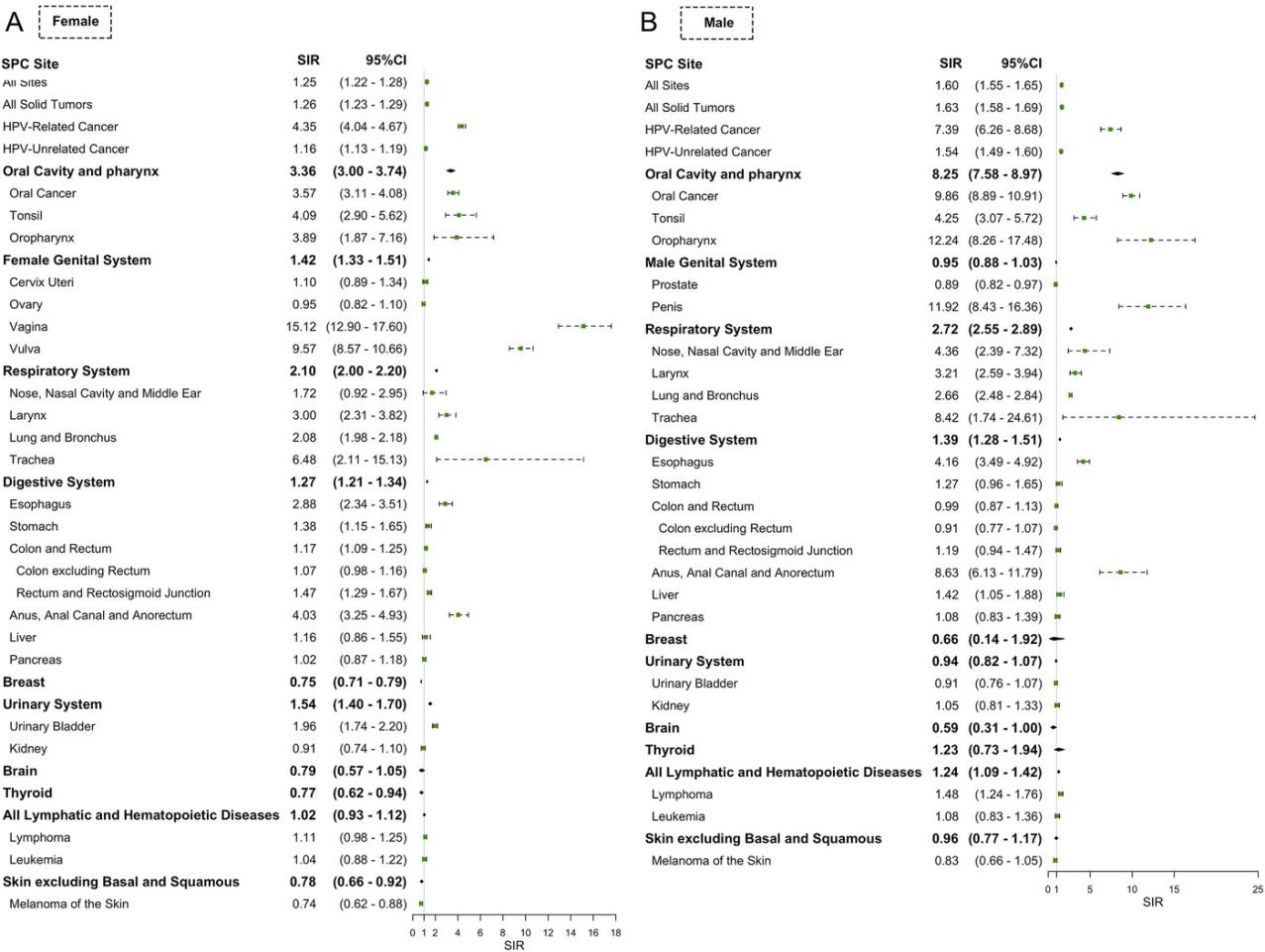MedComm | Incidence and risk factors of second primary cancer after the initial primary human papillomavirus related neoplasms

Open the phone and scan
Human papillomavirus (HPV) infection is a common viral infection, with its relatively high prevalence (11% in oral cavity, 26.8% for females in genital organs, 14% for females in anus, 45.2% for males in genital organs, and 16% for males in anus). Many types of HPV have been classified as Group 1 carcinogen by the International Agency for Research on Cancer (IARC). HPV is a carcinogen in some cancers, with base of tongue (84% of the cases infected with HPV), tonsillar (51%), oropharyngeal (44.1%), Waldeyer’s ring (32.9%), anal (84.3%), vulvar (40.4%), vaginal (69.9%), cervical (70%), and penile (47.9%) cancers included. Cancers listed above are HPV-related cancer and the rest are HPV-unrelated cancer. According to the study by de Martel et al, HPV infection is responsible for 4.5% (630 000 new cases per year) of all cancer cases worldwide. Despite the burden of HPVrelated cancer, we have seen improvement in the prognosis of HPV-related cancer over time, due to the more advanced treatment and earlier detection. Improved survival from the initial primary cancer (IPC) means an elevated risk of second primary cancer (SPC). The investigation into SPC after HPV-related cancer is urgent and necessary for the surveillance strategies, based on the high prevalence of HPV-related cancer and the improved survival.

The authors identified 86 790 patients diagnosed with initial primary HPV-related cancer between 1973 and 2010 in the SEER database. Standardized incidence ratio (SIR) and cumulative incidence were calculated to assess the risk of SPC after HPVrelated cancer. The SIR of SPC after HPV-related cancer was 1.60 (95% confidence interval [CI], 1.55-1.65) for male and 1.25 (95% CI, 1.22-1.28) for female (Fig. 1). SIR of second primary HPV-related cancer (7.39 [95% CI, 6.26-8.68] male and 4.35 [95% CI, 4.04-4.67] female) was significantly higher than that of HPV-unrelated cancer (1.54 [95% CI, 1.49-1.60] male and 1.16 [95% CI, 1.13-1.19] female). The 5-year cumulative incidence of SPC was 7.22% (95% CI, 6.89-7.55%) for male and 3.72% (95% CI, 3.58-3.88%) for female. Risk factors for SPC included being married and having initial primary cancer (IPC) diagnosed at earlier stage for both genders, and IPC diagnosed at older age as well as surgery performed for female. Patients diagnosed with HPV-related cancer are more likely to develop another primary cancer, compared with the age-specific reference population.

Fig. 1 SIR of SPC after the diagnosis of the initial primary HPV-related cancer stratified by sex
Article Access: https://onlinelibrary.wiley.com/doi/10.1002/mco2.43
Website for MedComm: https://onlinelibrary.wiley.com/journal/26882663
Looking forward to your contributions.


